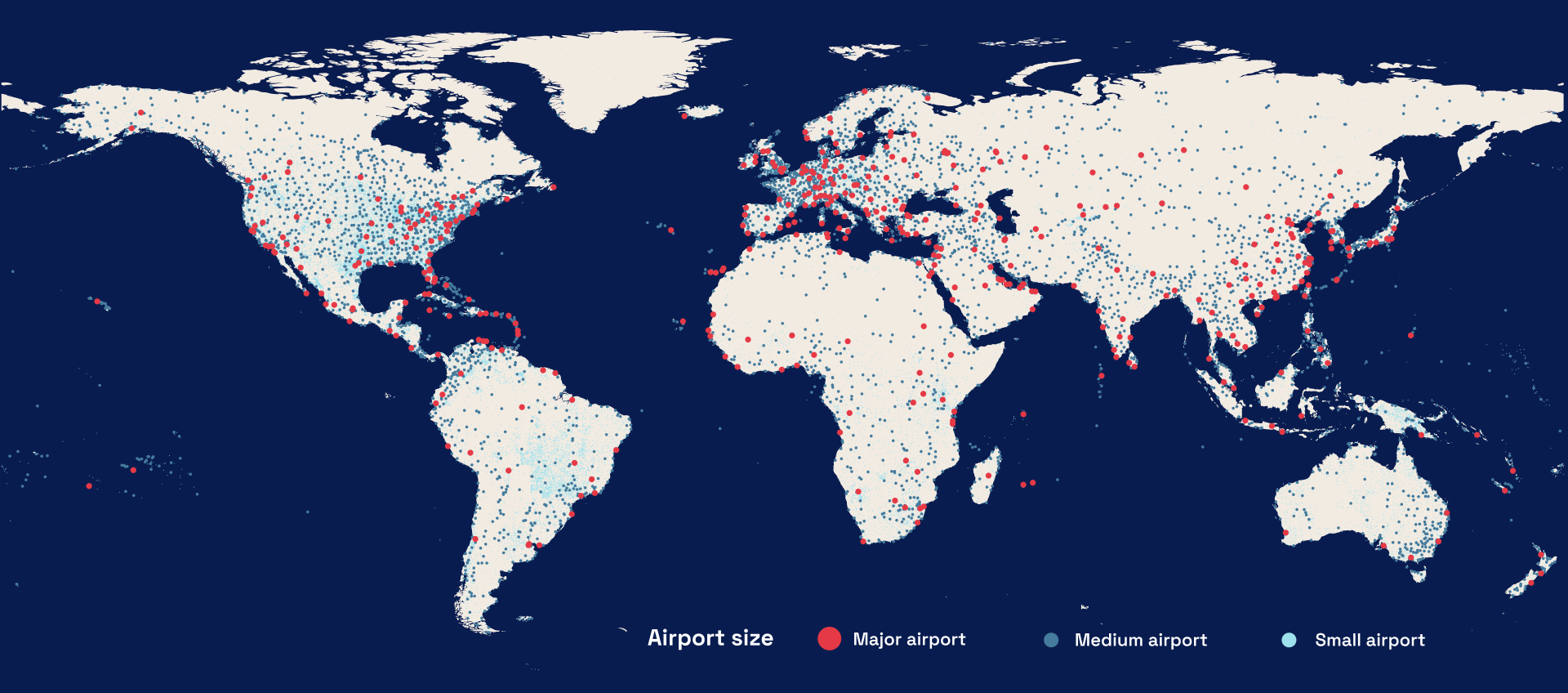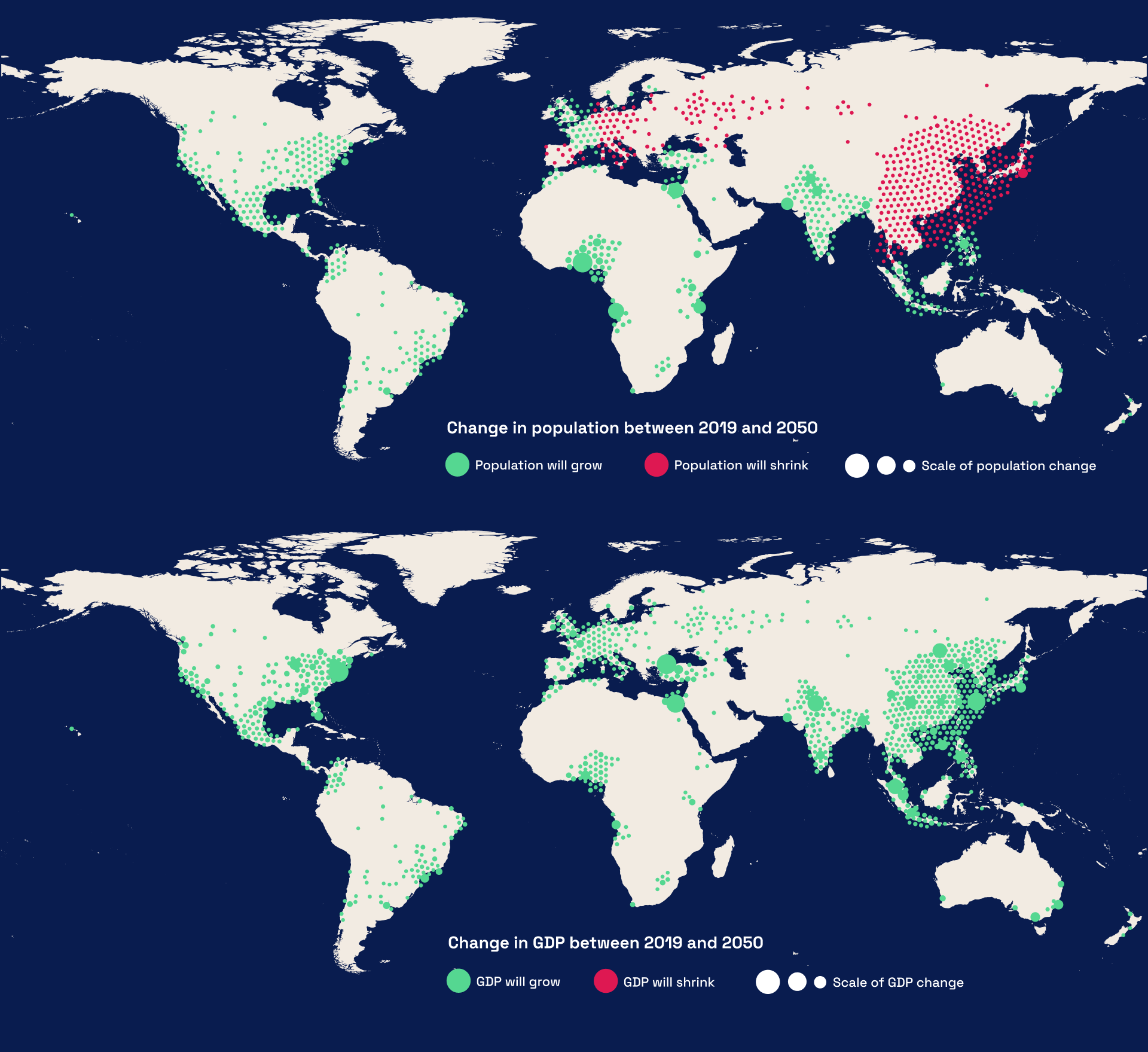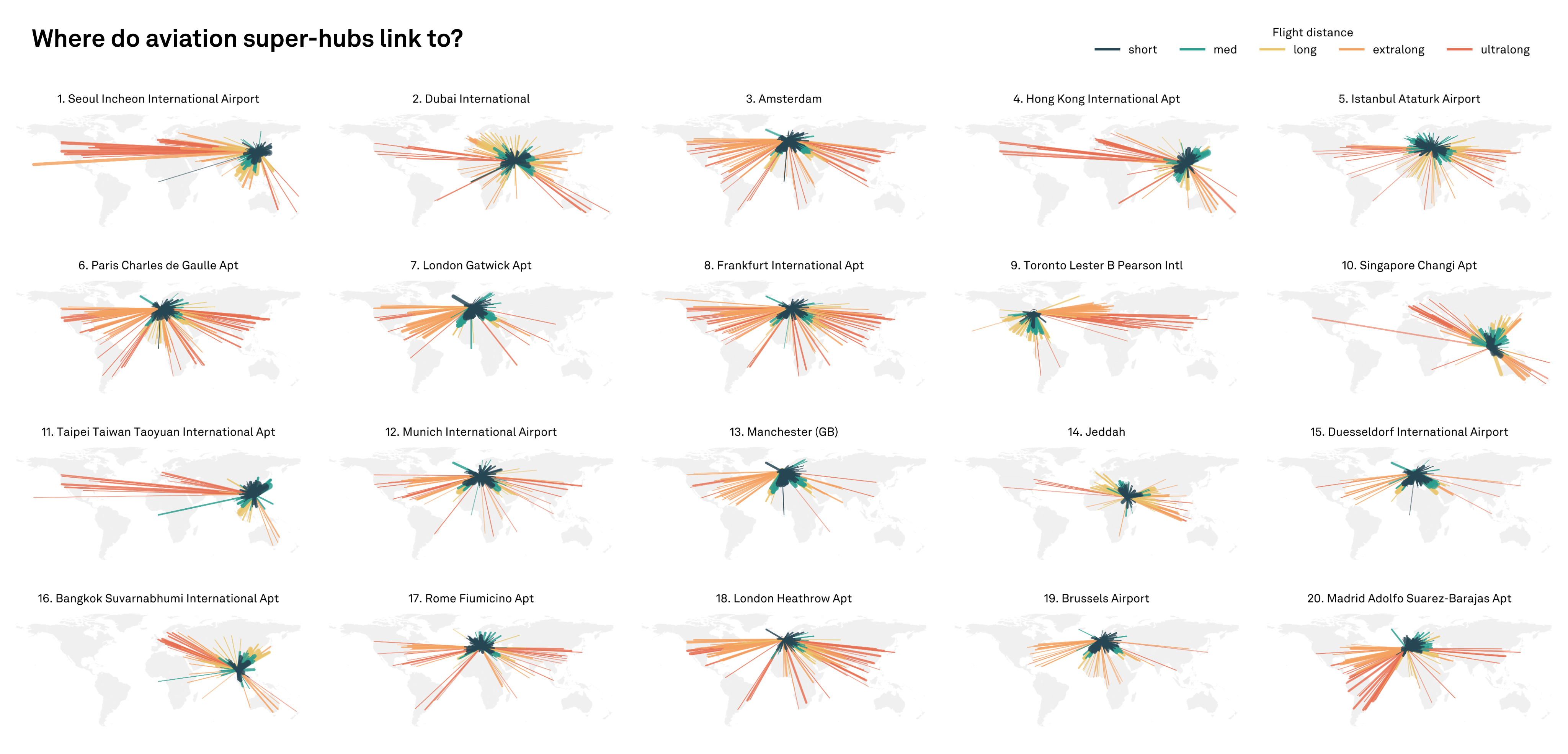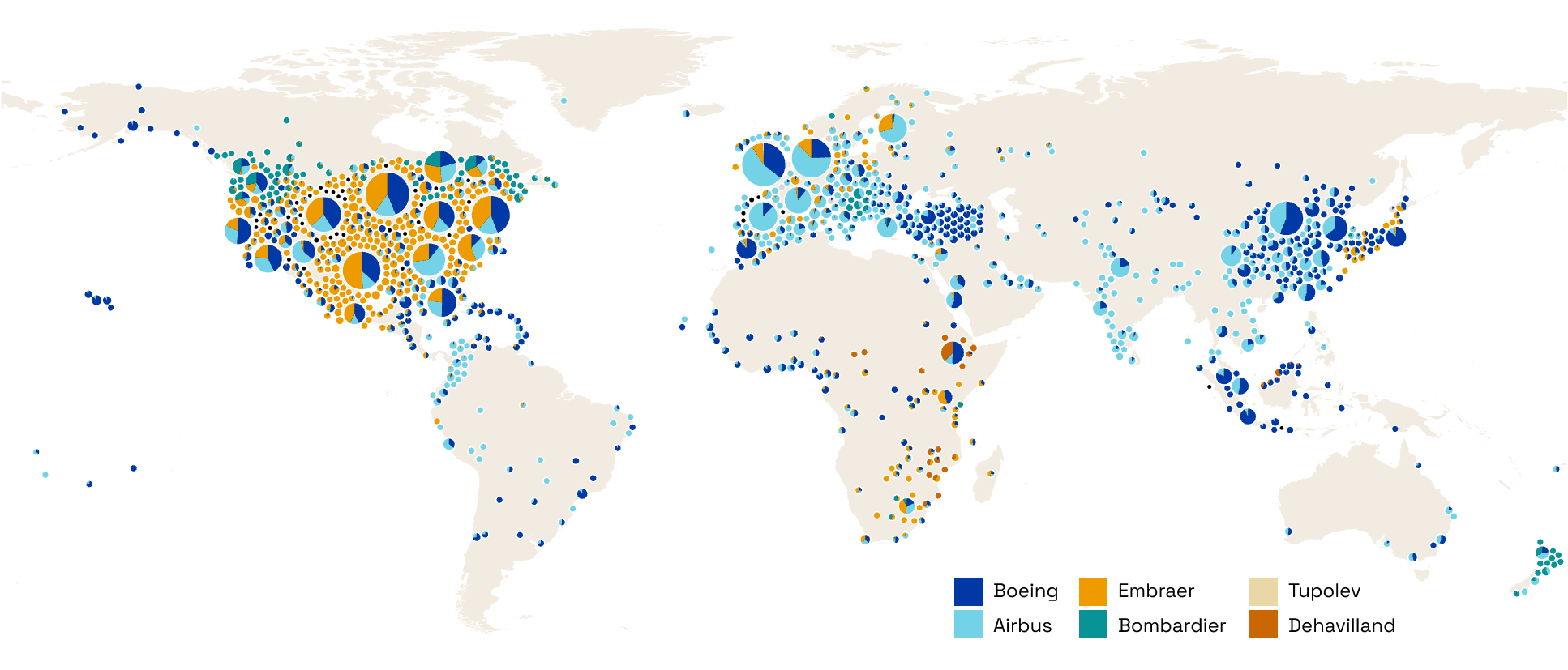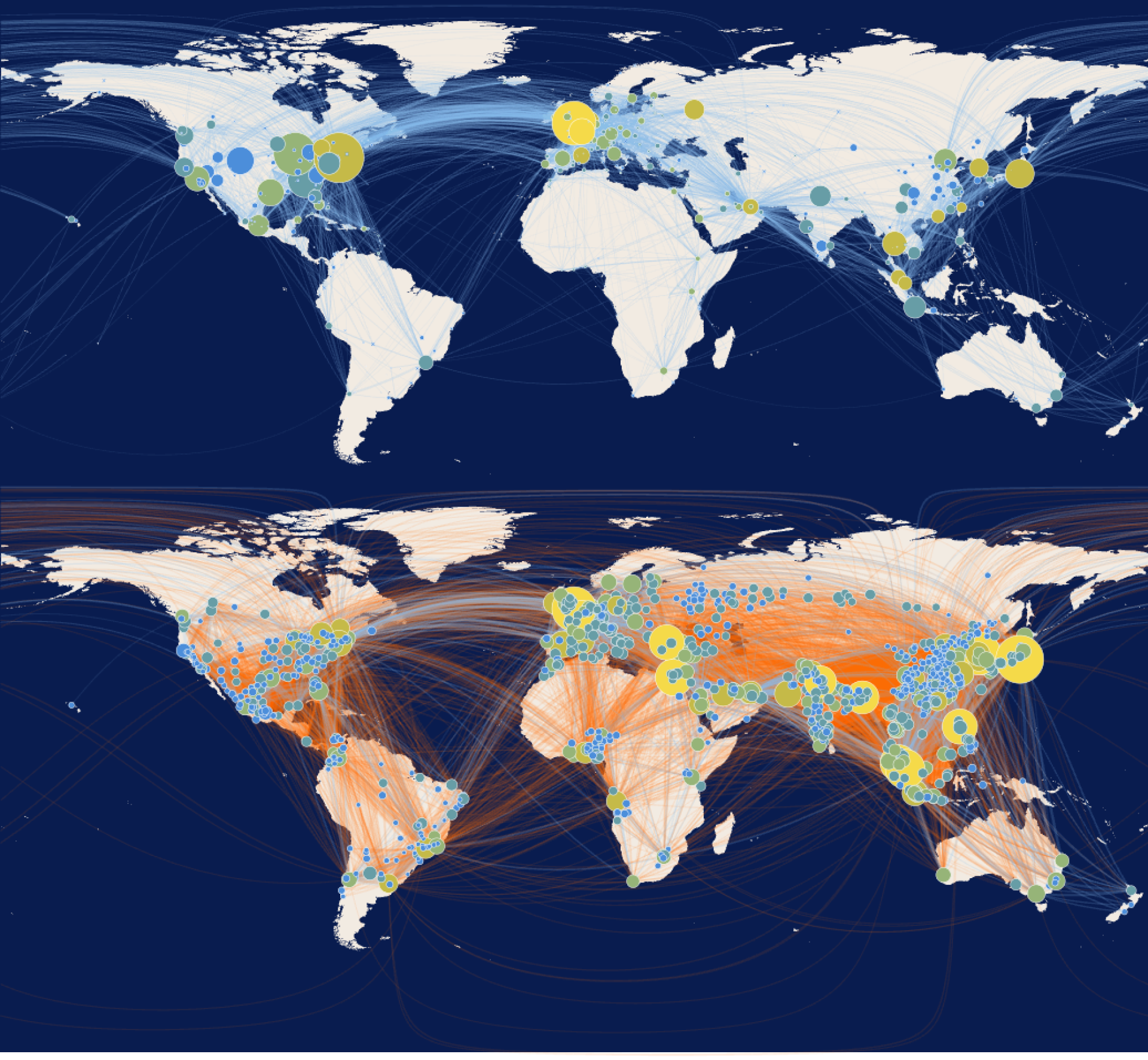The new world order of airports: aviation demand by 2050*
Meta Design Lab, Singapore University of Technology and Design
Aviation mirrors the expansion of urban centres through increased airport-city linkages, infrastructure enhancements, and passenger numbers. These have all accelerated over the last two decades, especially in Asia and Africa. Aviation supports vital information flow of people and goods, and it is a key driver of countries’ economies and business productivity, despite the recent impacts of COVID on commercial travel. This project explores how the symbiotic relationship between global aviation networks and urban centres will evolve and grow in response to projected changes in city populations and gross domestic product.
I use network science concepts and map them to aspects of global and domestic aviation networks to derive present and future aviation demand. PageRank serves as a proxy for the average desire to visit an airport and its respective urban centre based on access to advantageous business, tourist, or social opportunities. I combine this network analysis with Central Place Theory – specifically, gravity models – to capture the spatial function of the airport as a gateway between member cities of the global aviation network.
Using relationships derived from 2019 data and estimates of the potential of sustainable options like high-speed rail, electric vertical take-off and landing aircraft and hydrogen-powered aircraft, I forecast future aviation demand for urban centres and its consequences on future airport configurations. Preliminary results show that existing volumes of flights, GDP and urban population can be used as a reliable sensor for demand between airport-city pairs. These same factors illustrate that the gravitational force between cities will have a significant influence on the likelihood of inter-cluster travel for business and tourism. While 2019 flights are focused on western European and North American cities, our model’s projections show that by 2050, many key aviation hubs will be in South and Southeast Asia.
